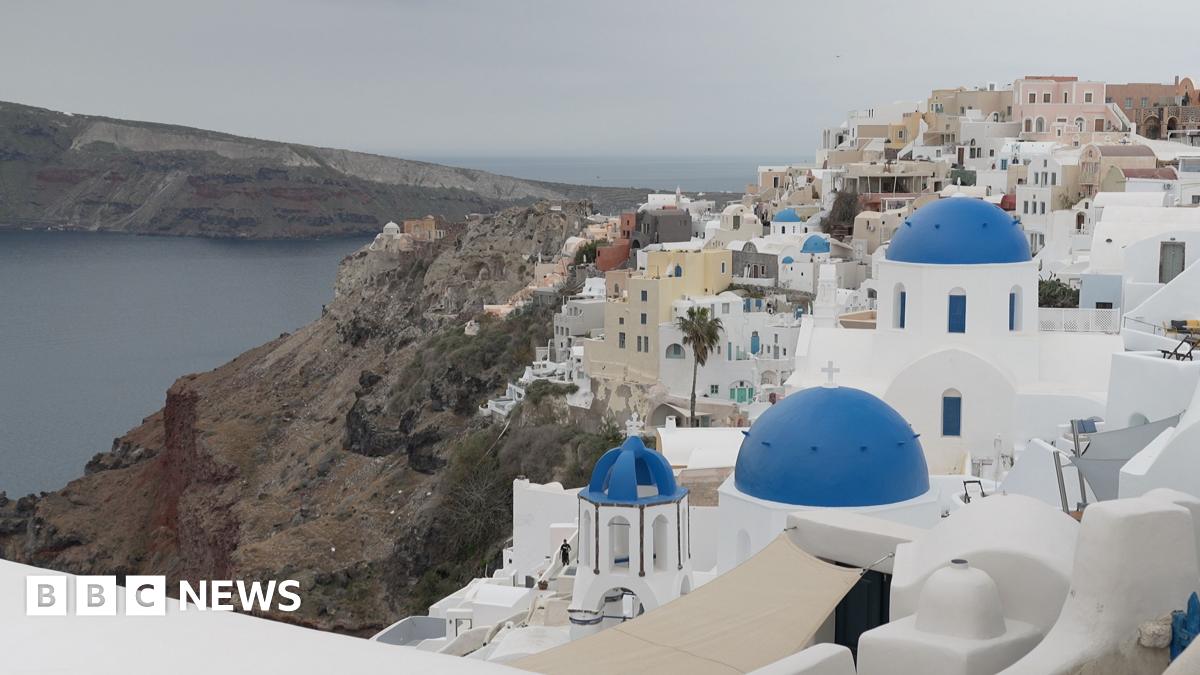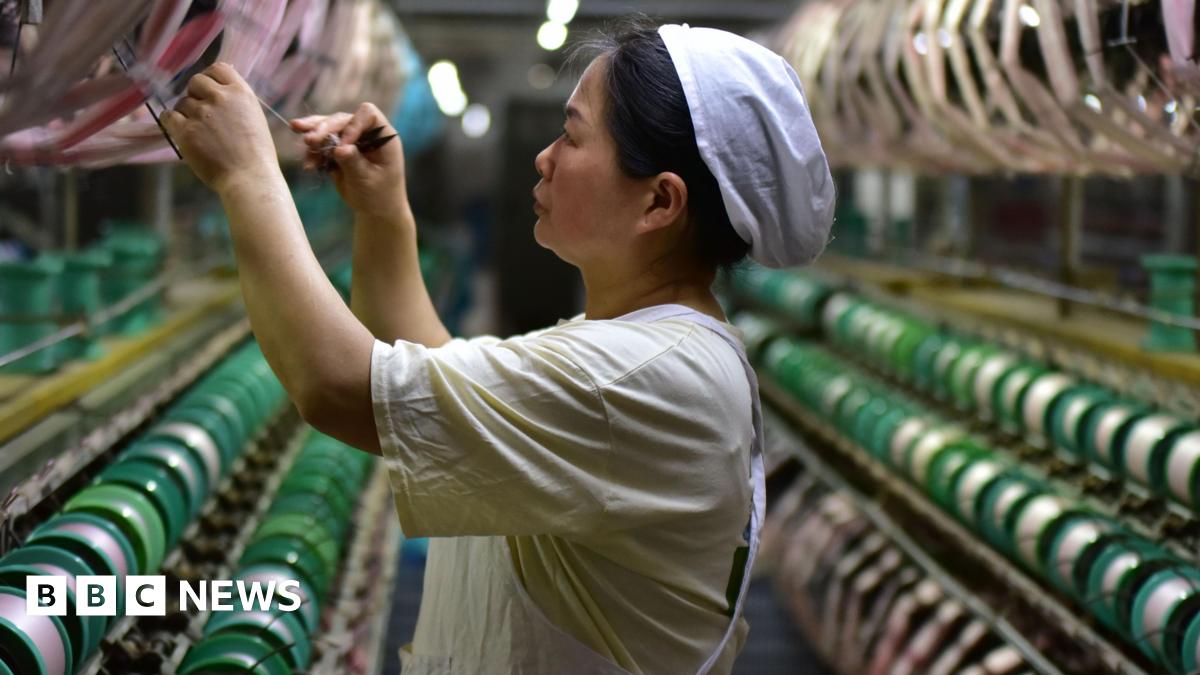Santorini Volcano Under Scrutiny: Understanding Future Eruption Risks

Welcome to your ultimate source for breaking news, trending updates, and in-depth stories from around the world. Whether it's politics, technology, entertainment, sports, or lifestyle, we bring you real-time updates that keep you informed and ahead of the curve.
Our team works tirelessly to ensure you never miss a moment. From the latest developments in global events to the most talked-about topics on social media, our news platform is designed to deliver accurate and timely information, all in one place.
Stay in the know and join thousands of readers who trust us for reliable, up-to-date content. Explore our expertly curated articles and dive deeper into the stories that matter to you. Visit Best Website now and be part of the conversation. Don't miss out on the headlines that shape our world!
Table of Contents
Santorini Volcano Under Scrutiny: Understanding Future Eruption Risks
Santorini, Greece, a breathtaking island renowned for its iconic white-washed villages clinging to volcanic cliffs, is also a ticking geological clock. The caldera, a massive crater formed by a cataclysmic eruption thousands of years ago, remains active, prompting ongoing scientific scrutiny and raising questions about future eruption risks. Understanding these risks is crucial not only for the island's residents but also for the global scientific community.
The Minoan eruption, estimated to have occurred around 1600 BC, is considered one of the largest volcanic events in recorded history. Its devastating impact reshaped the island's landscape and is believed to have contributed to the decline of the Minoan civilization on Crete. While such a colossal eruption is unlikely in the near future, the volcano's ongoing activity demands constant monitoring and rigorous analysis.
<h3>Signs of Volcanic Activity and Monitoring Efforts</h3>
Recent research indicates subtle yet significant signs of unrest beneath Santorini. Scientists utilize a range of sophisticated monitoring techniques to assess the volcano's condition:
- GPS measurements: Track ground deformation, revealing subtle shifts in the earth's surface indicative of magma movement.
- Seismic monitoring: Detects even minor earthquakes, often a precursor to volcanic eruptions. Increased seismic activity can signal pressure buildup within the magma chamber.
- Gas emissions: Analysis of gases released from fumaroles (vents that release steam and gases) helps scientists determine the composition and pressure of the magma.
- Geochemical analysis: Examining changes in water chemistry around the island can reveal subtle signs of magma interaction with groundwater.
These monitoring efforts are coordinated by the Institute of Geodynamics at the National Observatory of Athens and international collaborators, providing a comprehensive picture of the volcano's current state. Their data is crucial for predicting potential eruptions and informing evacuation plans.
<h3>Assessing the Risk: Probability and Impact</h3>
While predicting the exact timing of a volcanic eruption remains impossible, scientists can assess the probability and potential impact based on historical data and current monitoring results. The likelihood of a major eruption comparable to the Minoan event is considered low in the short term. However, smaller, less destructive eruptions are more probable. These could still pose significant risks to the island's infrastructure, tourism, and population.
The potential impacts of a Santorini eruption vary depending on its magnitude:
- Ash fall: Could disrupt air travel, damage crops, and cause respiratory problems.
- Lava flows: Could destroy property and infrastructure in localized areas.
- Tsunamis: A significant eruption could generate a tsunami, impacting coastal areas in the Aegean Sea and beyond.
<h3>Preparing for the Future: Mitigation and Preparedness</h3>
Understanding the risks associated with the Santorini volcano is the first step towards effective mitigation and preparedness. This includes:
- Strengthening monitoring networks: Continuous improvement of monitoring technology and data analysis is essential for early warning systems.
- Developing robust evacuation plans: Detailed evacuation plans for residents and tourists are vital in case of an eruption.
- Public awareness campaigns: Educating the public about the risks and preparedness measures is critical.
- International collaboration: Sharing data and expertise among international scientific communities enhances the accuracy of risk assessment and preparedness strategies.
The future of Santorini, with its unique beauty and rich history, depends on a proactive and informed approach to managing the volcanic risks. Ongoing research, improved monitoring, and comprehensive preparedness measures are crucial for ensuring the safety and wellbeing of both the island's residents and visitors. For more information on volcanic activity and risk assessment, visit the [link to relevant scientific organization website]. Staying informed is a crucial part of responsible travel and living in volcanic regions.

Thank you for visiting our website, your trusted source for the latest updates and in-depth coverage on Santorini Volcano Under Scrutiny: Understanding Future Eruption Risks. We're committed to keeping you informed with timely and accurate information to meet your curiosity and needs.
If you have any questions, suggestions, or feedback, we'd love to hear from you. Your insights are valuable to us and help us improve to serve you better. Feel free to reach out through our contact page.
Don't forget to bookmark our website and check back regularly for the latest headlines and trending topics. See you next time, and thank you for being part of our growing community!
Featured Posts
-
 Prisoner Swap El Salvador Negotiates With Venezuela Including Us Deportees
Apr 22, 2025
Prisoner Swap El Salvador Negotiates With Venezuela Including Us Deportees
Apr 22, 2025 -
 Trade Wars Chinas Sharp Rebuke Of Trump Tariff Concessions
Apr 22, 2025
Trade Wars Chinas Sharp Rebuke Of Trump Tariff Concessions
Apr 22, 2025 -
 Addressing The Issue Why Men Dont Seek Regular Gp Check Ups
Apr 22, 2025
Addressing The Issue Why Men Dont Seek Regular Gp Check Ups
Apr 22, 2025 -
 Revolut Security Concerns User Experiences Crypto Loss
Apr 22, 2025
Revolut Security Concerns User Experiences Crypto Loss
Apr 22, 2025 -
 Spy Allegations And Court Decision Public Demands Prime Ministerial Response
Apr 22, 2025
Spy Allegations And Court Decision Public Demands Prime Ministerial Response
Apr 22, 2025
